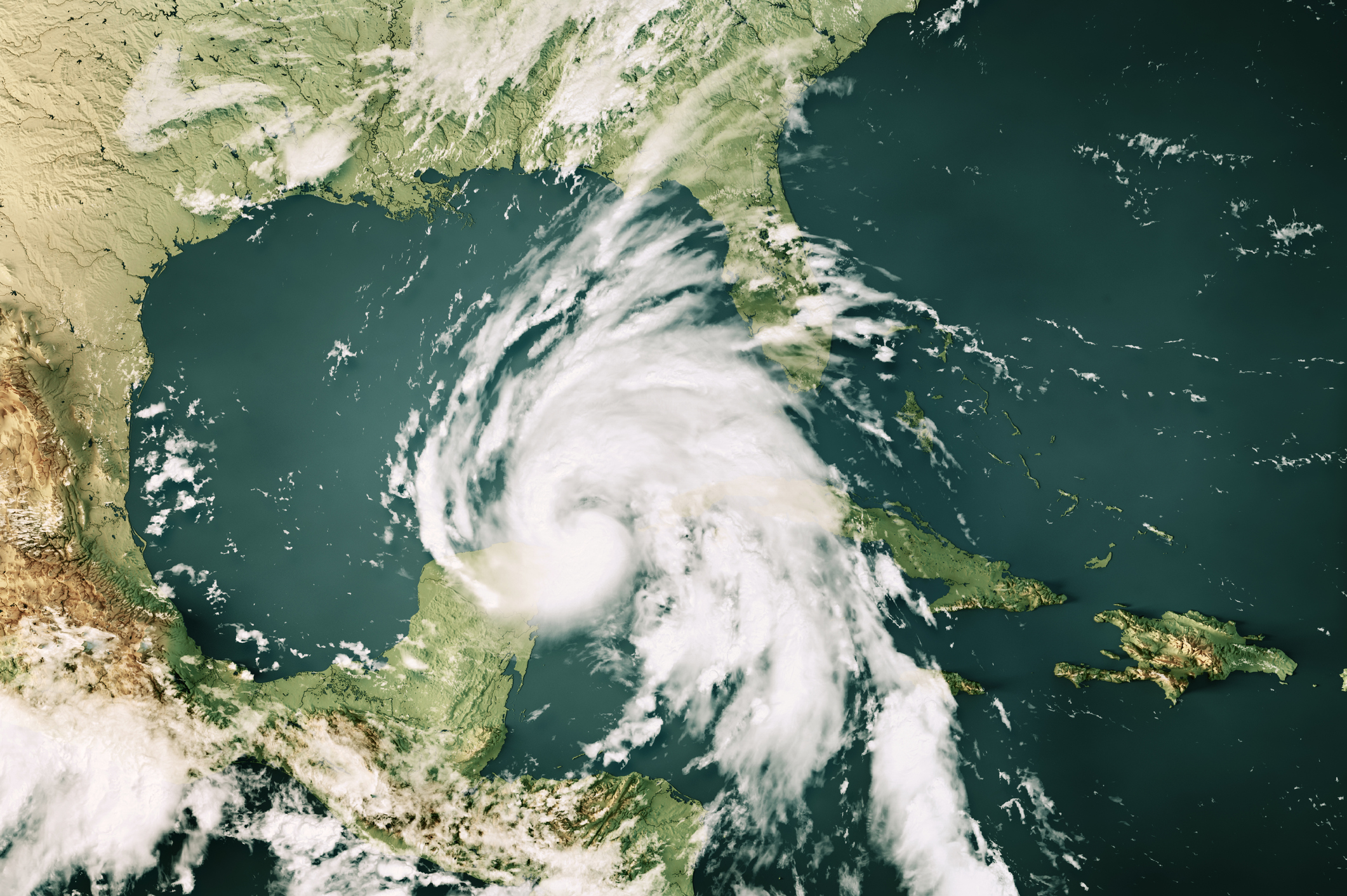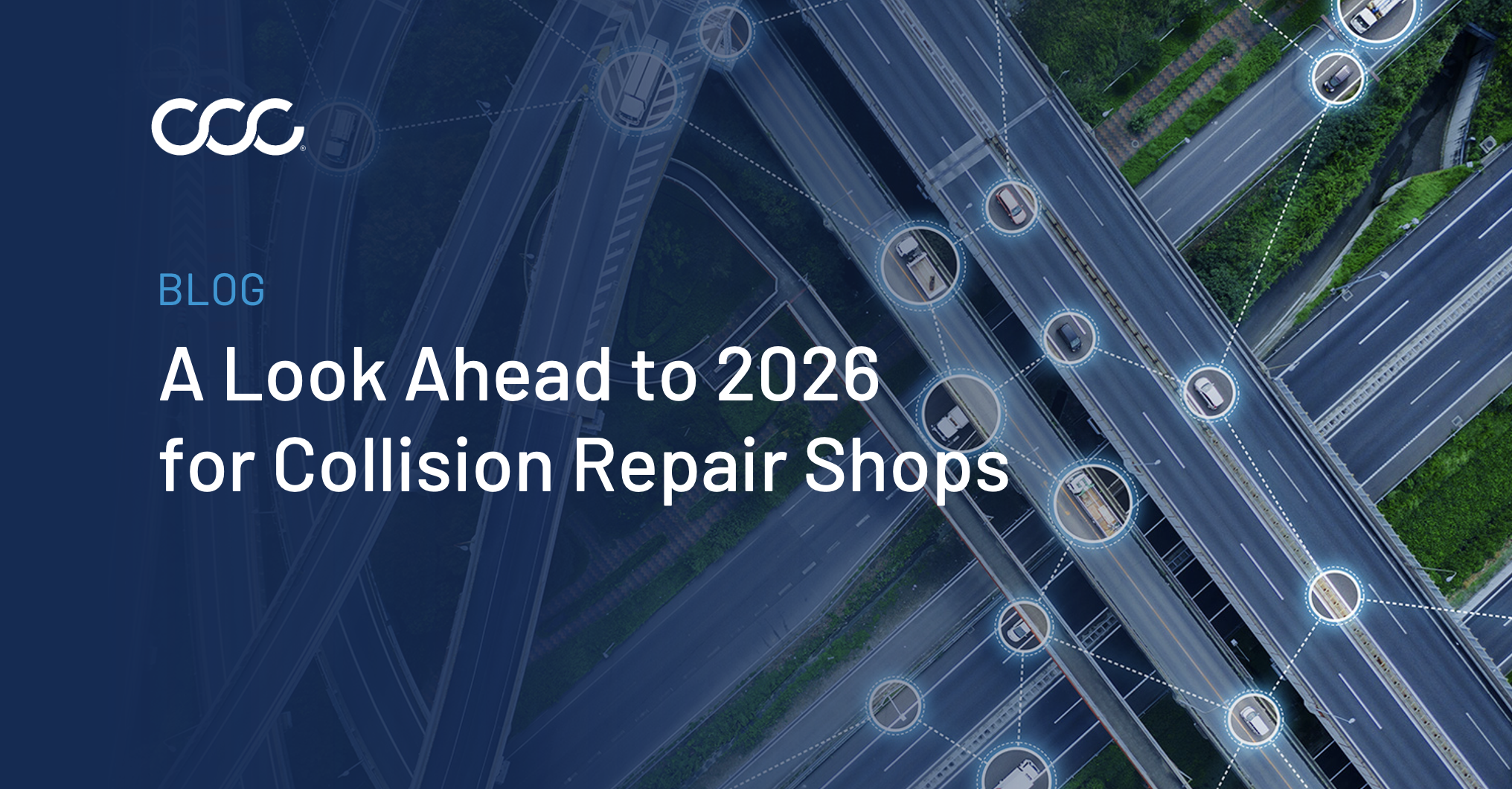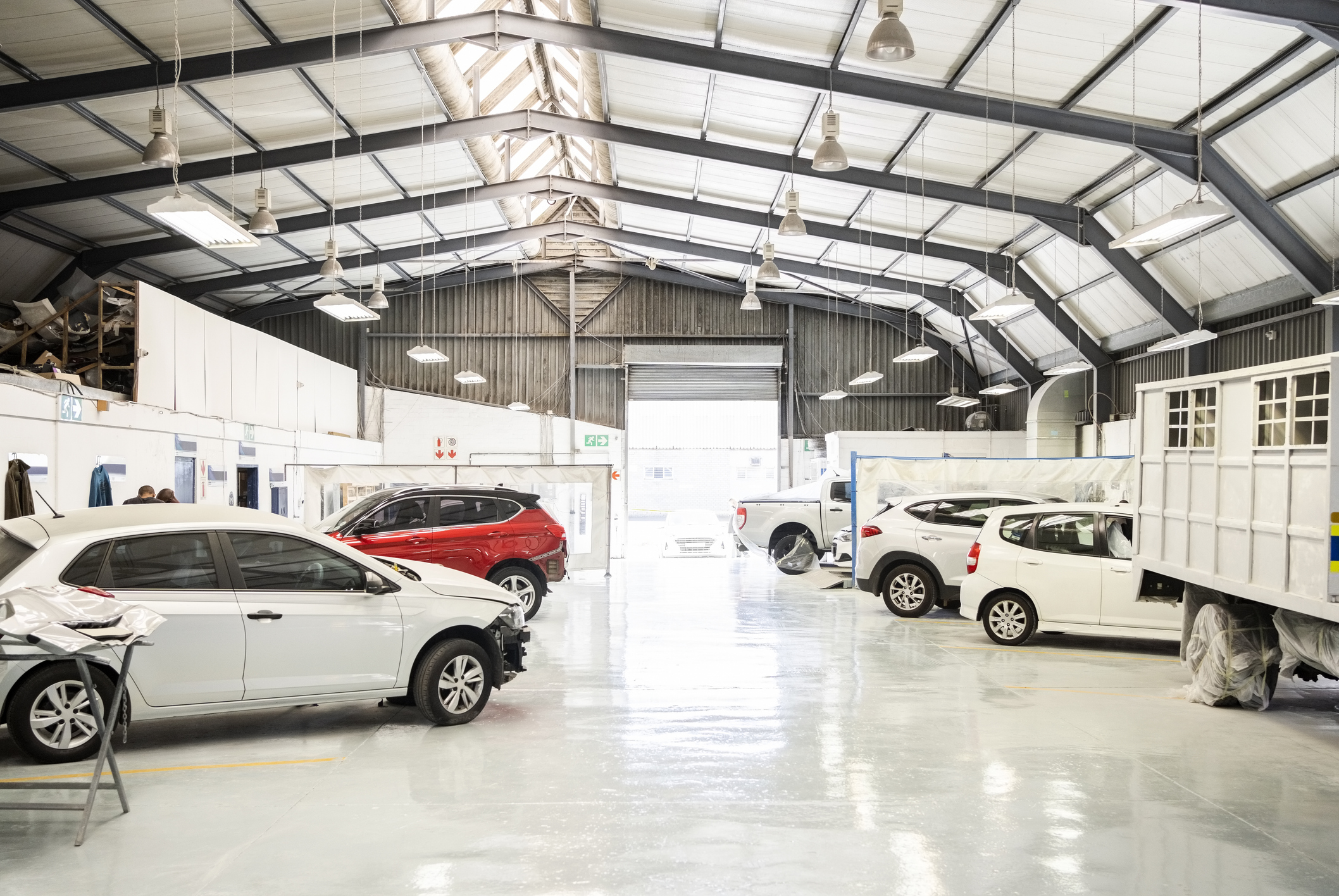Hurricanes don’t just damage vehicles; they overwhelm the entire auto claims process – from triage to valuation to repairs. When a major storm strikes, auto carriers, repair shops, salvage providers, and rental companies all face an immediate and dramatic spike in demand.

With the 2025 hurricane season forecasted to be an active one, insurers, adjusters, and repair facilities need to be prepared to withstand the inevitable surge in auto claims, total loss assessments, and operational backlogs that hurricanes bring.
For claims and valuation teams, this translates into:
- A flood of new claims, many requiring fast appraisal under difficult conditions
- A sharp increase in total loss determinations
- Pressure to manage specialty and complex vehicle valuations
- Disruptions to cycle times, parts availability, and downstream claim processing
Hurricane Ian in 2022 provides a clear example of just how rapidly these challenges can escalate.
Hurricane Ian: A Case Study
When Hurricane Ian made landfall across Florida, Georgia, and South Carolina in late September 2022, there was a near-instantaneous spike in auto claims, according to CCC’s historical claims data. Comprehensive estimate volumes tripled across the three states, and estimates increased nearly sevenfold in Florida alone.


For claims teams, that influx meant rapid triage, appraisals under resource-constrained conditions, and a scramble to keep operations running amid widespread property damage and dramatic increases in total loss claims.
During Hurricane Ian's peak impact window, total loss percentages spiked to nearly 52% across Florida, Georgia, and South Carolina and in Florida alone, 50.5% of auto claims were declared total losses. These figures reflect an extraordinary deviation from pre-storm norms, where total loss rates typically hovered between 16% and 18%.


For valuation teams, this surge presents two major challenges:
- Rapid, Accurate Assessments: Total loss determinations require thorough, timely valuations under tight timelines, often with limited access to damaged vehicles.
- Salvage and Disposal Coordination: The logistical complexity of assessing, removing, and processing thousands of totaled vehicles is intensified by damaged infrastructure, fuel shortages, and disrupted transportation networks.
The Special Case of Commercial and Recreational Vehicles (CRVs)
Hurricanes also impact CRVs. After Hurricane Ian, Florida saw significant increases in total loss claims across virtually all CRV categories, especially for marine (boats) of various sizes, heavy equipment, all-terrain vehicles, travel trailers, and motor homes.

These claims introduce additional complexity, as CRVs often require specialized valuation expertise, extended assessment timelines, and can carry widely varying costs, further straining insurer and repairer resources.
Downstream Claims Impacts That Linger for Months
Hurricanes leave behind more than just physical debris. Their disruption to claims operations can persist long after the storm. Examples of this might include:
- Backlogs of Unaddressed Claims: Delays in appraisals and repairs create a cascading effect, slowing the processing of future claims.
- Unrepaired Vehicles with Hidden Damage: As repair backlogs grow, more vehicles remain on the road with undiagnosed damage – particularly to electrical systems and safety features compromised during the storm.
- Increased Prior Damage on Future Claims: Vehicles left unrepaired or partially repaired following hurricanes complicate future claims, impacting valuations and policyholder satisfaction.
How Auto Claims Teams Can Prepare for 2025
Given the forecast for an active 2025 hurricane season, claims teams should consider taking the following steps now to prepare for the inevitable surge:
- Expand and Mobilize CAT Teams: Carriers should ensure catastrophe (CAT) teams are adequately staffed and trained to manage hurricane-driven spikes in claims and appraisals. Independent appraiser networks should be ready to deploy quickly, with clear protocols in place.
- Strengthen Valuation Resources: Total loss and CRV valuations require specialized expertise, particularly during large-scale weather events. Insurers should invest in training and technology to support rapid, consistent valuations – especially for complex vehicle types.
- Leverage AI-Powered Claims Technology: AI and predictive analytics can help forecast storm impacts, automate portions of the claims process, and reduce reliance on in-person appraisals. Digital tools increase capacity, enhance accuracy, and improve response times under disaster conditions.
- Enhance Policyholder Communication: Clear, timely updates are critical during hurricane season. Insurers and repair shops should leverage digital platforms to communicate claim procedures, repair timelines, and safety information to customers before, during, and after storms.
- Monitor Coverage Trends: Rising insurance costs have led some consumers to reduce or drop comprehensive coverage, particularly on older vehicles. This increases the likelihood of unrepaired storm damage complicating future claims and valuations. Insurers must educate policyholders on the risks associated with insufficient coverage.
Hurricane Season Demands Operational Readiness
Images of flooded streets and toppled homes often dominate the front-page news after a hurricane, but the less visible strain on auto claims and valuation teams is just as significant. These teams are on the front lines of disaster recovery for the auto industry, tasked with delivering accurate, timely assessments under extraordinary circumstances.
The 2025 hurricane season is expected to bring significant challenges, but with strategic staffing, advanced technology, and clear communication, auto claims teams can minimize disruptions, support their policyholders, and ensure their teams are prepared to weather the storm.
Hurricanes don’t just damage vehicles; they overwhelm the entire auto claims process – from triage to valuation to repairs. When a major storm strikes, auto carriers, repair shops, salvage providers, and rental companies all face an immediate and dramatic spike in demand.

With the 2025 hurricane season forecasted to be an active one, insurers, adjusters, and repair facilities need to be prepared to withstand the inevitable surge in auto claims, total loss assessments, and operational backlogs that hurricanes bring.
For claims and valuation teams, this translates into:
- A flood of new claims, many requiring fast appraisal under difficult conditions
- A sharp increase in total loss determinations
- Pressure to manage specialty and complex vehicle valuations
- Disruptions to cycle times, parts availability, and downstream claim processing
Hurricane Ian in 2022 provides a clear example of just how rapidly these challenges can escalate.
Hurricane Ian: A Case Study
When Hurricane Ian made landfall across Florida, Georgia, and South Carolina in late September 2022, there was a near-instantaneous spike in auto claims, according to CCC’s historical claims data. Comprehensive estimate volumes tripled across the three states, and estimates increased nearly sevenfold in Florida alone.


For claims teams, that influx meant rapid triage, appraisals under resource-constrained conditions, and a scramble to keep operations running amid widespread property damage and dramatic increases in total loss claims.
During Hurricane Ian's peak impact window, total loss percentages spiked to nearly 52% across Florida, Georgia, and South Carolina and in Florida alone, 50.5% of auto claims were declared total losses. These figures reflect an extraordinary deviation from pre-storm norms, where total loss rates typically hovered between 16% and 18%.


For valuation teams, this surge presents two major challenges:
- Rapid, Accurate Assessments: Total loss determinations require thorough, timely valuations under tight timelines, often with limited access to damaged vehicles.
- Salvage and Disposal Coordination: The logistical complexity of assessing, removing, and processing thousands of totaled vehicles is intensified by damaged infrastructure, fuel shortages, and disrupted transportation networks.
The Special Case of Commercial and Recreational Vehicles (CRVs)
Hurricanes also impact CRVs. After Hurricane Ian, Florida saw significant increases in total loss claims across virtually all CRV categories, especially for marine (boats) of various sizes, heavy equipment, all-terrain vehicles, travel trailers, and motor homes.

These claims introduce additional complexity, as CRVs often require specialized valuation expertise, extended assessment timelines, and can carry widely varying costs, further straining insurer and repairer resources.
Downstream Claims Impacts That Linger for Months
Hurricanes leave behind more than just physical debris. Their disruption to claims operations can persist long after the storm. Examples of this might include:
- Backlogs of Unaddressed Claims: Delays in appraisals and repairs create a cascading effect, slowing the processing of future claims.
- Unrepaired Vehicles with Hidden Damage: As repair backlogs grow, more vehicles remain on the road with undiagnosed damage – particularly to electrical systems and safety features compromised during the storm.
- Increased Prior Damage on Future Claims: Vehicles left unrepaired or partially repaired following hurricanes complicate future claims, impacting valuations and policyholder satisfaction.
How Auto Claims Teams Can Prepare for 2025
Given the forecast for an active 2025 hurricane season, claims teams should consider taking the following steps now to prepare for the inevitable surge:
- Expand and Mobilize CAT Teams: Carriers should ensure catastrophe (CAT) teams are adequately staffed and trained to manage hurricane-driven spikes in claims and appraisals. Independent appraiser networks should be ready to deploy quickly, with clear protocols in place.
- Strengthen Valuation Resources: Total loss and CRV valuations require specialized expertise, particularly during large-scale weather events. Insurers should invest in training and technology to support rapid, consistent valuations – especially for complex vehicle types.
- Leverage AI-Powered Claims Technology: AI and predictive analytics can help forecast storm impacts, automate portions of the claims process, and reduce reliance on in-person appraisals. Digital tools increase capacity, enhance accuracy, and improve response times under disaster conditions.
- Enhance Policyholder Communication: Clear, timely updates are critical during hurricane season. Insurers and repair shops should leverage digital platforms to communicate claim procedures, repair timelines, and safety information to customers before, during, and after storms.
- Monitor Coverage Trends: Rising insurance costs have led some consumers to reduce or drop comprehensive coverage, particularly on older vehicles. This increases the likelihood of unrepaired storm damage complicating future claims and valuations. Insurers must educate policyholders on the risks associated with insufficient coverage.
Hurricane Season Demands Operational Readiness
Images of flooded streets and toppled homes often dominate the front-page news after a hurricane, but the less visible strain on auto claims and valuation teams is just as significant. These teams are on the front lines of disaster recovery for the auto industry, tasked with delivering accurate, timely assessments under extraordinary circumstances.
The 2025 hurricane season is expected to bring significant challenges, but with strategic staffing, advanced technology, and clear communication, auto claims teams can minimize disruptions, support their policyholders, and ensure their teams are prepared to weather the storm.







